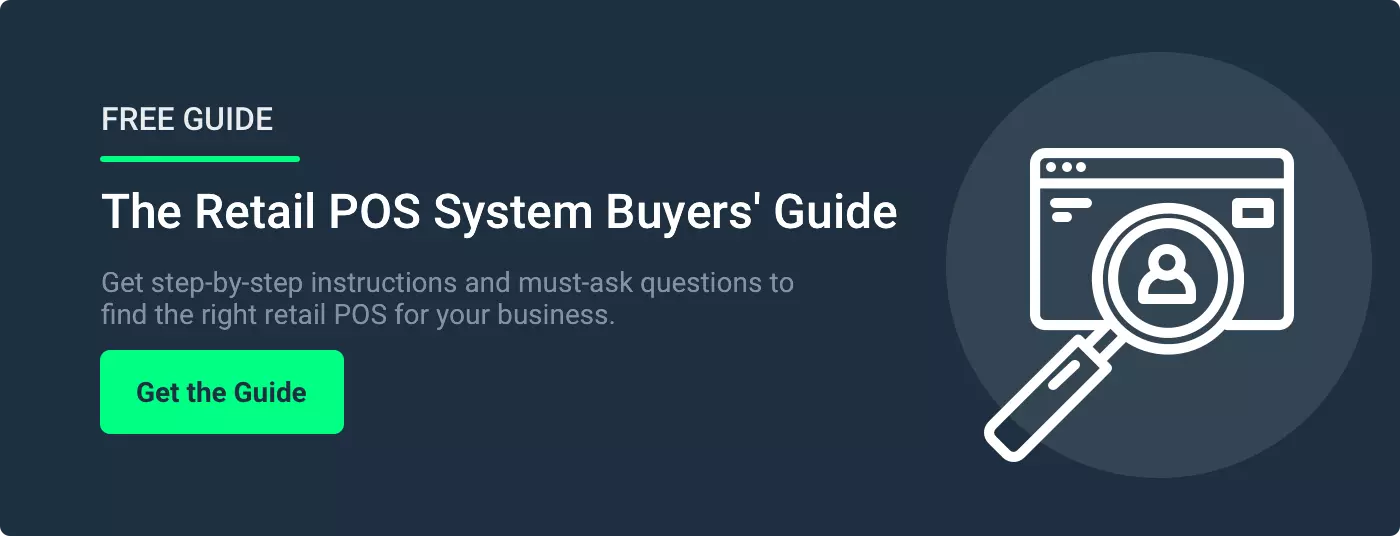There are hundreds of ways to start a new retail business... however, we've found that the most successful business owners/managers secure business loans to kick start their growth plans.
Finding the right business loan is easier said than done, however. To make matters more complex, once you've found the right business loan, it's challenging to know which steps you must follow to streamline the application process.
Without the correct information on securing funding, you risk ending up with the wrong loan or no loan at all. Almost a third of small businesses run out of capital, causing their business to shut down.
Let’s explore the step-by-step process of how to get a loan to start a business and avoid falling into that statistic as a new business owner. We’ll also include extra recommendations based on years of experience specializing in small business operations.
How to Get a Business Loan in 4 Simple Steps
Small business loans are an effective way to secure funding to start your business. Having your financial needs met ensures you’re able to make essential business purchases, including point of sale (POS) system hardware and software, real estate, business insurance, and all the other purchases you need to open your doors.
While half of the small businesses struggle to meet their financial needs, the other half is applying for small business loans. So what is the risk you’ll get a high-interest rate or be rejected for a loan?
As long as you follow the steps in this article and work with your lender to get the best rates possible, there is a meager chance that you will leave with zero capital. Only 9 percent of small businesses fail to receive any capital after completing a loan application.
Here are the four essential steps to know to get on the right track to securing a business loan.
1. Create a Financial Plan
Developing a financial plan is an essential first step of applying for a loan to start a business. There are two parts to the average financial plan. The first part of your financial plan is an overview of your business’ updated financial performance. The second part of your financial plan is your growth projections for the future.
If your financial plan is inaccurate, it’s likely to hurt your financial projections down the line. Overestimating how much funding you qualify for may lead to the inability to pay it back on time while underestimating your financial projections shortchanges your company. Working with a reliable account and financial advisor or planner are two of the best ways to prevent inaccuracies.
There are eight essential reports to ensure your financial plan is complete. They include:
- Profit and loss statements, including your revenue, cost of goods sold, and gross margin.
- Cash flow statements, including how much cash your business brought in and paid out, your monthly ending cash balance, and average cash balance.
- Balance sheets, including your assets, liabilities, and equity.
- Sales forecasts, based on forecasted revenue, forecasted costs of goods sold, and forecasted gross margin.
- Personnel plan, including all your labor costs, position breakdown, and the value of personnel in your business.
- Profitability ratios, including gross margin, return on assets and sales, and return on investment.
- Liquidity ratios, including debt-to-equity ratio, current ratio, and working capital.
- Break-even analysis, based on your contribution margin, labor costs, operational costs, and cost per goods sold.
2. Check Business and Personal Credit
Your credit scores impact your overall loan qualification and are one of the main determining factors of your loan interest rate. The lower your business and personal credit score is, the higher your credit risk. A good business credit score is above 80, while a good personal credit score is generally above 720.
There are three levels of credit risk according to the Federal Reserve Banks, including:
- Low credit risk: business scores of 80-100 or personal credit score of 720+
- Medium credit risk: business scores of 50-79 or personal credit score of 620-719
- High credit risk: business scores below 49 or personal credit score of below 620
You may still qualify for a small business loan with a decent interest rate, even in the medium to high credit risk range. Every lender has its own requirements, and its decisions are based on many factors.
Did you know that your small business loans also have an impact on your business and personal credit as well?
Opening a small business secured line of credit requires a form of collateral, which means you’re personally liable for loan repayment. Therefore, anything that happens with your business loan has an impact on your personal credit score. Same goes for your business credit score. Any late payments or fiscal irresponsibility can result in a lower business credit score, which can have a snowball effect on your future business transactions.
3. Meet With Lenders
The outcome of your lender meeting determines your loan qualification and interest rate eligibility. It’s important to have all the essential information before stepping into your lender meeting to have a smooth, productive meeting.
You and your co-signer, if applicable, need to bring essential documents to your lender meeting, including:
- A completed financial plan
- Proof of updated business licenses
- Personal and business income tax returns
- Photocopies of relevant driver’s licenses
- Commercial lease information
- Business resume(s)
- Personal and business bank statements
- Articles of incorporation
Preparing this documentation before your meeting and asking your lender beforehand what is needed will help prevent unnecessary delays.
4. Review the Fine Print
The devil is in the details, right? Many details can be lost in the pile of paperwork that you need to review before signing on the dotted line.
Fine print and loopholes can hurt your business down the road, which is why we recommend having a lawyer review your small business loan documentation. By having a professional review of all the fine print of your business loan, you’re able to fully understand the terms and conditions of your loan and make informed decisions.
Knowing what is in the fine print and identifying inconsistencies or loopholes also gives you room for negotiation. If you have a good business and personal credit score and find a fine-print policy that will negatively impact you, the next step would be to either negotiate with your lender or find another lender to keep your score intact.
The Next Step After Securing Funding
After figuring out how to get a loan to start a business, the next step is to make essential purchases. Before your doors open, you’re going to need hardware, software, business systems, and equipment to get started.
We can relieve one thing off your to-do list right now.
At POS Nation, we’ve created a buyers’ guide for how to navigate purchasing a retail POS system. This guide has all the information you need to know before your purchase, step-by-step instructions, and the must-ask questions to ask a POS system vendor. This guide will help you make an informed decision on which hardware and software your business needs for reliable and safe transactions.








 by Brian Sullivan
by Brian Sullivan

 by Cort Ouzts
by Cort Ouzts

 by Spence Hoffman
by Spence Hoffman